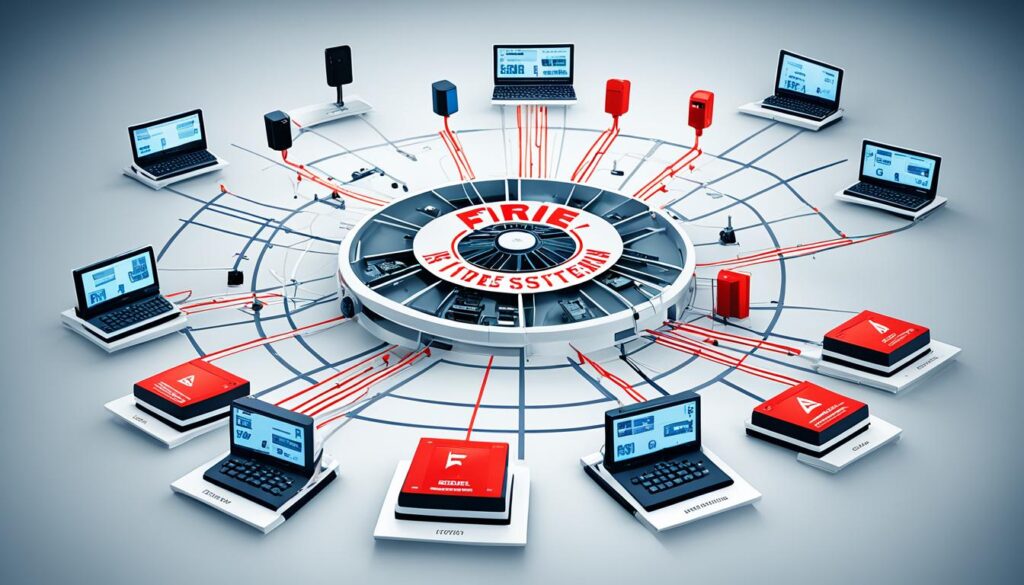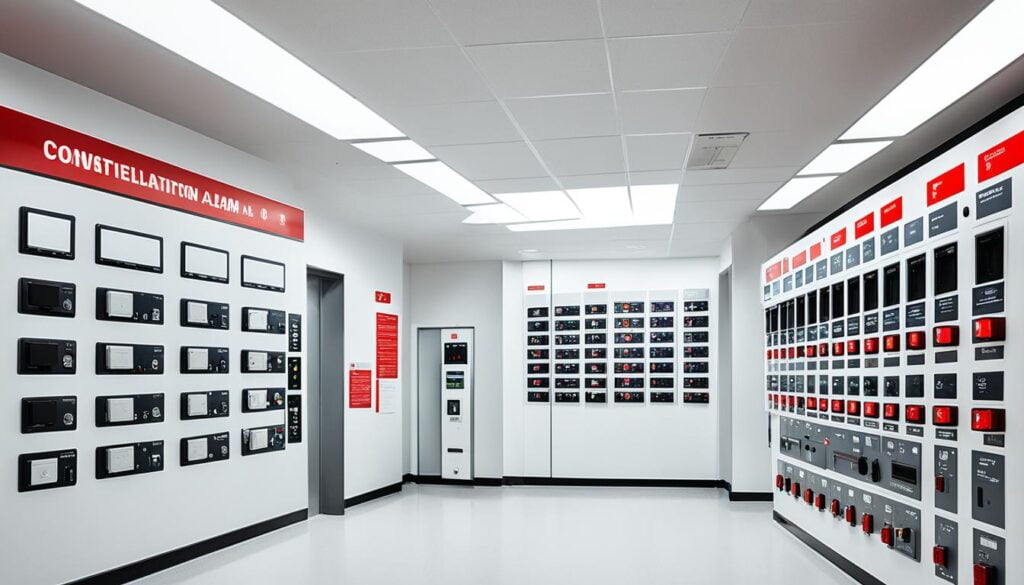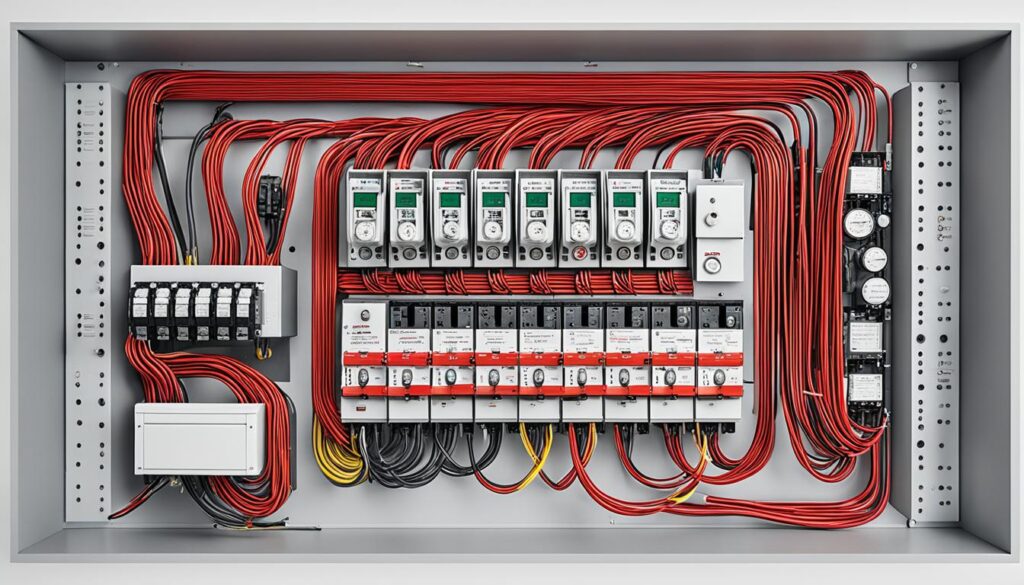Are you confident that your building is equipped with a reliable fire alarm system? Do you know how low voltage fire alarm systems can enhance fire safety and protection? In the event of a fire, every second counts, and having the right system in place can make all the difference. But what exactly makes low voltage fire alarm systems essential?
In this comprehensive guide, we will explore everything you need to know about low voltage fire alarm systems, their installation, types, and benefits. Whether you’re a building owner, a facilities manager, or simply someone concerned about fire safety, this article will provide you with the essential knowledge to make informed decisions.
Types of Fire Alarm Systems
When it comes to fire alarm systems, there are several types available, each with its own advantages and considerations. Understanding the differences between these systems is crucial in selecting the right one for your building’s needs. Let’s explore the four main types of fire alarm systems: addressable, conventional, wireless, and hard-wired.
Addressable Fire Alarm Systems

An addressable fire alarm system utilizes advanced technology to assign a unique address to each alarm device. This allows for precise identification and location of the device in the event of a fire or emergency. Addressable systems are commonly used in large buildings and complexes, providing efficient and immediate alerts. Although they may be more expensive to install compared to other systems, addressable fire alarm systems offer enhanced functionality and better overall control.
Conventional Fire Alarm Systems

Conventional fire alarm systems use a landline connection to link multiple devices together. These systems are typically analog and divide the building into zones. When an alarm is triggered, the specific zone is identified but not the exact location of the device. Although conventional systems are more cost-effective than addressable systems, they may not provide the same level of precision in pinpointing the source of a fire.
Wireless Fire Alarm Systems

Wireless fire alarm systems have gained popularity due to their ease of installation and flexibility. Unlike addressable and conventional systems, wireless systems use radio frequencies to transmit signals between devices. This eliminates the need for extensive wiring and allows for quick installations in both new and existing buildings. With wireless fire alarm systems, you can enjoy the convenience of adding or relocating devices without the hassle of rewiring.
Hard-wired Fire Alarm Systems

Hard-wired fire alarm systems are directly connected to the building’s low voltage electrical system. These systems typically utilize a backup battery to ensure functionality during power outages. While hard-wired systems require professional installation and wiring, they offer a reliable and permanent fire detection solution. This type of system is commonly found in commercial buildings and facilities.
Each type of fire alarm system has its own set of advantages and considerations. It’s important to assess your building’s specific requirements and consult with fire safety professionals to determine the most appropriate system for your needs. Whether you opt for an addressable, conventional, wireless, or hard-wired system, investing in a reliable fire alarm system is crucial for the safety and protection of your building and its occupants.
Installation and Wiring of Fire Alarm Systems
The installation and wiring of fire alarm systems require careful consideration and adherence to regulations. It is essential to ensure that the system is installed correctly to provide optimal fire safety and protection. Here are some key factors to keep in mind when installing and wiring fire alarm systems:
- Fire Alarm Control Equipment: Place the fire alarm control equipment in an area of low fire risk, such as a utility room or dedicated control room. This equipment should be easily accessible to the fire brigade for quick response in case of an emergency.
- Power Supplies: Fire alarm systems should have both mains power and battery backup. The backup batteries should last at least 24 hours without mains power to ensure continuous operation during power outages. Regular checks and maintenance of the batteries are necessary to guarantee their reliability.
- Fire Compartments: To prevent the spread of fire, it is crucial to separate different areas of the building into fire compartments. These compartments act as barriers, slowing down the spread of fire and giving occupants more time to evacuate safely. Fire doors and walls should be used to create these compartments.
- Zoning: Zoning involves dividing the building into different sections based on the floor area and compartment boundaries. Each zone should have its fire alarm system to ensure accurate fire detection and localization. Zoning allows for targeted evacuation procedures and minimizes false alarms.
- Recommended Cable Types: When it comes to wiring fire alarm systems, using the appropriate cable types is crucial for reliable and safe operation. Two commonly recommended cable types are mineral-insulated copper-sheath cables (MICC) and cables complying with BS6387. Consult with a professional to determine the best cable type for your specific system requirements.
Proper installation and wiring of fire alarm systems are vital for the overall effectiveness and functionality of the system. Following regulations and industry best practices ensures that the system operates optimally and provides early warning in the event of a fire.
Conclusion
In conclusion, a low voltage fire alarm system is an essential component of any building’s fire safety measures. With the increasing importance of fire prevention and protection, investing in a reliable fire alarm system is crucial for ensuring the safety and well-being of occupants.
Whether you choose an addressable, conventional, wireless, or hard-wired fire alarm system, it is important to consider the specific needs and layout of your building. Each type of system offers unique benefits and considerations, such as precise location identification, quick installation, or cost-effectiveness.
Proper installation, wiring, and zoning of your fire alarm system are vital to its effectiveness. Regular inspections and tests will help ensure that the system is functioning correctly and ready to respond in case of an emergency. By following these best practices, you can minimize the risk of fire hazards and protect your building and its occupants.
Advancements in technology have made wireless fire alarm systems increasingly popular due to their convenience and reliability. These systems offer quick and simple installation without the need for extensive wiring, making them an attractive choice for many buildings.
Remember, investing in a low voltage fire alarm system is not just a legal requirement, but it is also a proactive step towards safeguarding your building and the people inside from potential fire dangers. Prioritize fire safety and choose a fire alarm system that suits your specific needs to protect your property and the lives that depend on it.
FAQ
What is a low voltage fire alarm system?
A low voltage fire alarm system is a type of fire alarm system that operates using a lower voltage electrical system. It is designed to detect and alert occupants in the event of a fire, providing crucial protection for buildings and their occupants.
Why are fire alarm systems important?
Fire alarm systems are crucial for protecting buildings and ensuring the safety of occupants. They provide early detection of fires, allowing for quick evacuation and minimizing potential damage. Additionally, fire alarm systems comply with building codes and regulations, promoting a safe and secure environment.
What are the different types of fire alarm systems?
There are several types of fire alarm systems, including addressable, conventional, wireless, and hard-wired systems. Addressable fire alarm systems provide precise location identification in the event of a fire. Conventional fire alarm systems connect devices via landline and are analog. Wireless fire alarm systems use radio frequencies to transmit signals and are ideal for quick and simple installation. Hard-wired fire alarm systems are connected directly to the building’s low voltage electrical system.
What are the benefits of wireless fire alarm systems?
Wireless fire alarm systems offer quick and simple installation. They are ideal for retrofitting buildings without the need to run wires. These systems also provide flexibility in terms of device placement and can be easily expanded to accommodate changing needs or building layouts.
How should fire alarm control equipment be placed?
Fire alarm control equipment should be located in an area of low fire risk and easily accessible to the fire brigade. This ensures that in the event of a fire, the control equipment can be easily reached and operated.
What power supplies are needed for fire alarm systems?
Fire alarm systems should have both mains power and battery backup. The standby batteries should last at least 24 hours without mains power to ensure continuous operation during power outages.
How should fire compartments be separated?
Fire compartments should be separated to prevent the spread of fire. This can be achieved through the use of fire-resistant materials and proper compartmentalization of different areas within the building.
What are recommended cable types for fire alarm systems?
Recommended cable types for fire alarm systems include mineral-insulated copper-sheath cables (MICC) and cables complying with BS6387. These cables are designed to withstand high temperatures and provide reliable signal transmission for fire alarm systems.
